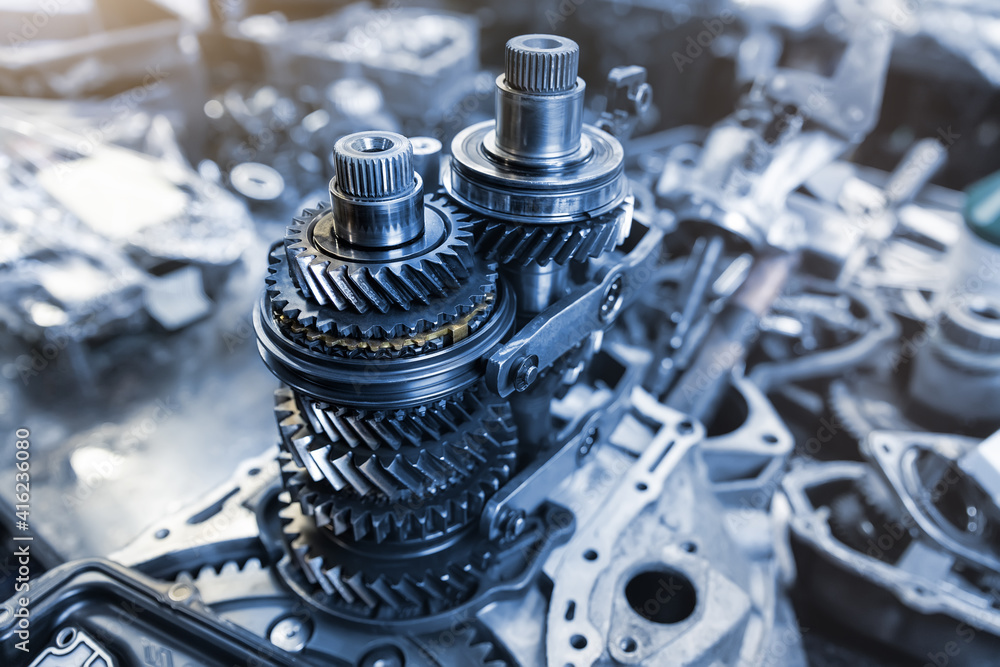Gear Types in Automotive Transmissions
One of the main components of any automotive transmission are the different gear types that allow the driver to select the optimal gear for their driving needs. The three main gear types found in most automobiles include:
– Low gears: Low gears, commonly labeled 1st and 2nd gear, are meant for accelerating from a stop or moving at very slow speeds. They provide the highest torque multiplication which makes the vehicle easier to start moving. However, low gears are only suitable for speeds under 30-40 km/h as they can over-rev the engine at higher velocities.
– Mid gears: Mid gears, usually 3rd through 5th gear, are optimal for regular city and highway driving within the 40-80 km/h speed range. They provide suitable torque for maintaining speed while avoiding excessive engine RPMs. Most everyday driving can be done comfortably within the mid gear range.
– High gears: The high gears, usually 6th gear and sometimes 7th or 8th, are meant for cruising at high speeds above 80 km/h on the highway. They have lower torque multiplication which allows the vehicle to maintain fast cruising speeds without over-revving the engine. High gears are more fuel efficient but don’t offer much power for accelerating or hill climbing.
Manual vs Automatic Transmissions
A key difference between transmissions is whether they are manual or automatic. In a manual transmission, the driver must manually select gears using a clutch pedal and gear stick. This gives them full control over when to shift but requires more driver involvement. Automatic Transmission Gears take care of gearshifts electronically without any input from the driver through a torque converter. While automatics are more convenient for most drivers, manuals provide better fuel efficiency and control.
Continuously Variable Transmissions
In recent years, a new type of automatic transmission called a Continuously Variable Transmission (CVT) has gained popularity. Instead of fixed gear ratios, a CVT uses a pulley system to allow infinite variability between its highest and lowest available gear ratios. This maximizes fuel efficiency by keeping the engine RPM in its optimal power band. It also provides acceleration similar to a lower fixed gear. However, some drivers complain CVTs lack the crisp gear shifts of a traditional automatic.
Dual-Clutch vs Torque Converter Transmissions
Within automatics, two main types are dual-clutch transmissions (DCT) and torque converter transmissions. DCTs shift gears more quickly than traditional torque converter automatics as they operate more like two manual transmissions working in tandem. They are becoming increasingly common in performance-oriented cars for their sporty gearshifts and efficiency. Meanwhile, most family vehicles still use the older torque converter type which emphasize smooth shifts over quickness.
Planetary Gear Sets
Understanding how planetary gear sets function is key to grasping transmission design. Most gearboxes incorporate one or multiple planetary gear sets that allow for different gear ratios. A planetary gear set typically includes a sun gear in the middle, planet gears surrounding it in orbits, and a ring gear enclosing them. By controlling the spinning action of these components, gear changes can be achieved. Planetary gear sets save space and allow convenient automatic and multi-gear operation compared to older non-planetary transmissions.
Transmission Fluid and maintenance
Proper transmission fluid is essential to keep gearsets lubricated and ensure smooth, reliable shifting over thousands of miles. Automatic transmissions in particular depend on clean fluid to operate valves, bands and clutches electronically. Regular fluid and filter changes are recommended, usually every 30,000-100,000 miles depending on the vehicle and its usage conditions. Low fluid levels or dirty fluid can cause transmission problems including harsh shifts or failure. Checking fluid level and condition during routine services helps maximize transmission life.
The Future of Automotive Transmissions
As vehicles evolve to include new propulsion systems like hybrids, electric and autonomous options, transmissions will also be adapting. Electronic control is facilitating more advanced shifting strategies and gearboxes are being engineered to handle diverse power sources. Dual-clutch automated manuals may become common across segments for their efficiency. And while traditional automatics and manuals will remain relevant, continuously variable options could see expanded use especially in hybrid/electric vehicles for their flexibility matching different power curves. The transmission landscape will keep growing in new permutations to serve ever-changing mobility needs.
Automotive transmission gears come in a variety of types serving different functions from low to high speed driving. While manuals offer more control, automatics are prevalent for their convenience across many vehicles. New technologies like CVTs and DCTs are enhancing gearboxes, but planetary gear sets remain core to designing multi-gear transmissions. Proper maintenance ensures optimum performance from any transmission over its lifetime. As engines evolve, transmissions will also adapt to support diverse propulsion avenues in the automotive industry.
*Note:
1. Source: Coherent Market Insights, Public sources, Desk research
2. We have leveraged AI tools to mine information and compile it

